2023 Kawasaki Ultra 160LX Review
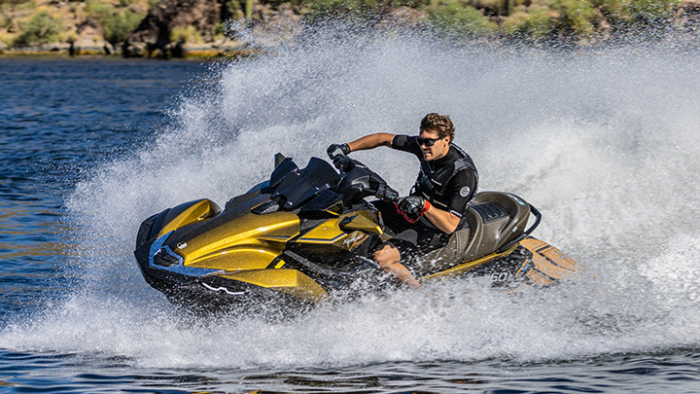
Engine: Four-cylinder 1,498cc DOHC
Fuel Capacity: 21.1 gal.
Stowage Capacity: 44.5 gal.
Seating Capacity: 3
Price: Starting at $17,299
We got our first look at the Kawasaki Ultra 160LX in January, and in mid-April we finally got the change to ride the craft, joining a press-only, nearly 120-mile run on the Sacramento River. Since our first look story was fairly thorough, we thought we’d do our full review a little differently, focusing on some of the craft’s most-hyped features…and if they lived up to the pre-ride hype.
Standout Feature
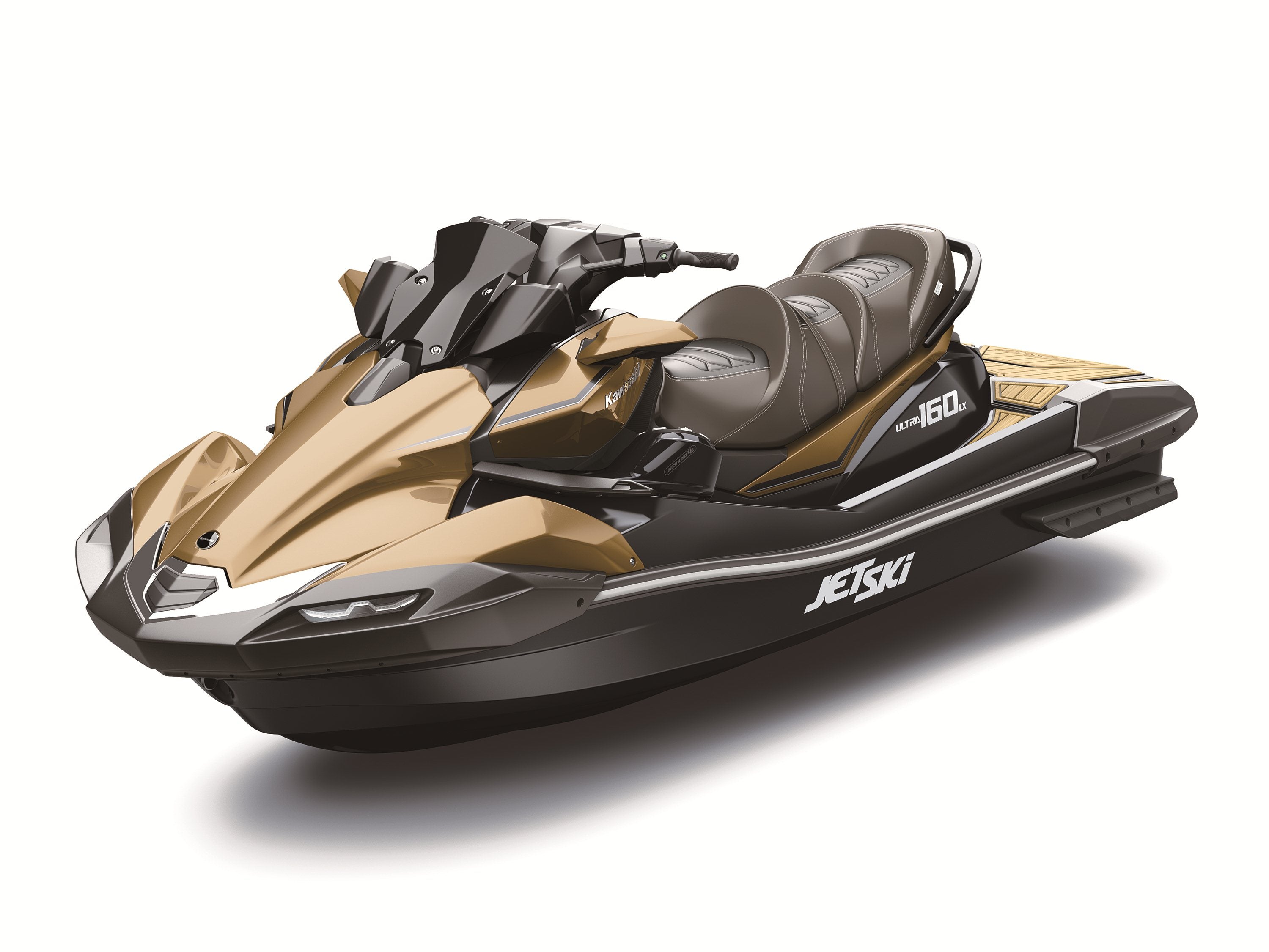
For all the cool new tech that trickled down from the flagship Ultra 310LX, the standout feature on the 160LX remains the Ultra hull. It’s well proven as a big-water warrior, a favorite of offshore racers over the years for its ability to track straight and true through ocean waves or wind-driven chop. What impressed most on our river ride, however, was how well the craft tracks in the mixed-up conditions and criss-crossing wakes that are typical of group rides, particularly on narrower rivers or channels. With throttle pinned, I moved back and forth across wakes without a hint of wandering or the bow diving in a new direction unexpectedly. Not all similar craft can claim that confident of a ride. In fact, I even got a little careless at times, occasionally – don’t try this at home – riding one-handed while holding a soaked cap out to dry in the wind while crossing back and forth these wakes at full speed. It’s just a stable, predictable, go-where-you-point-it ride.
Side-Access Storage
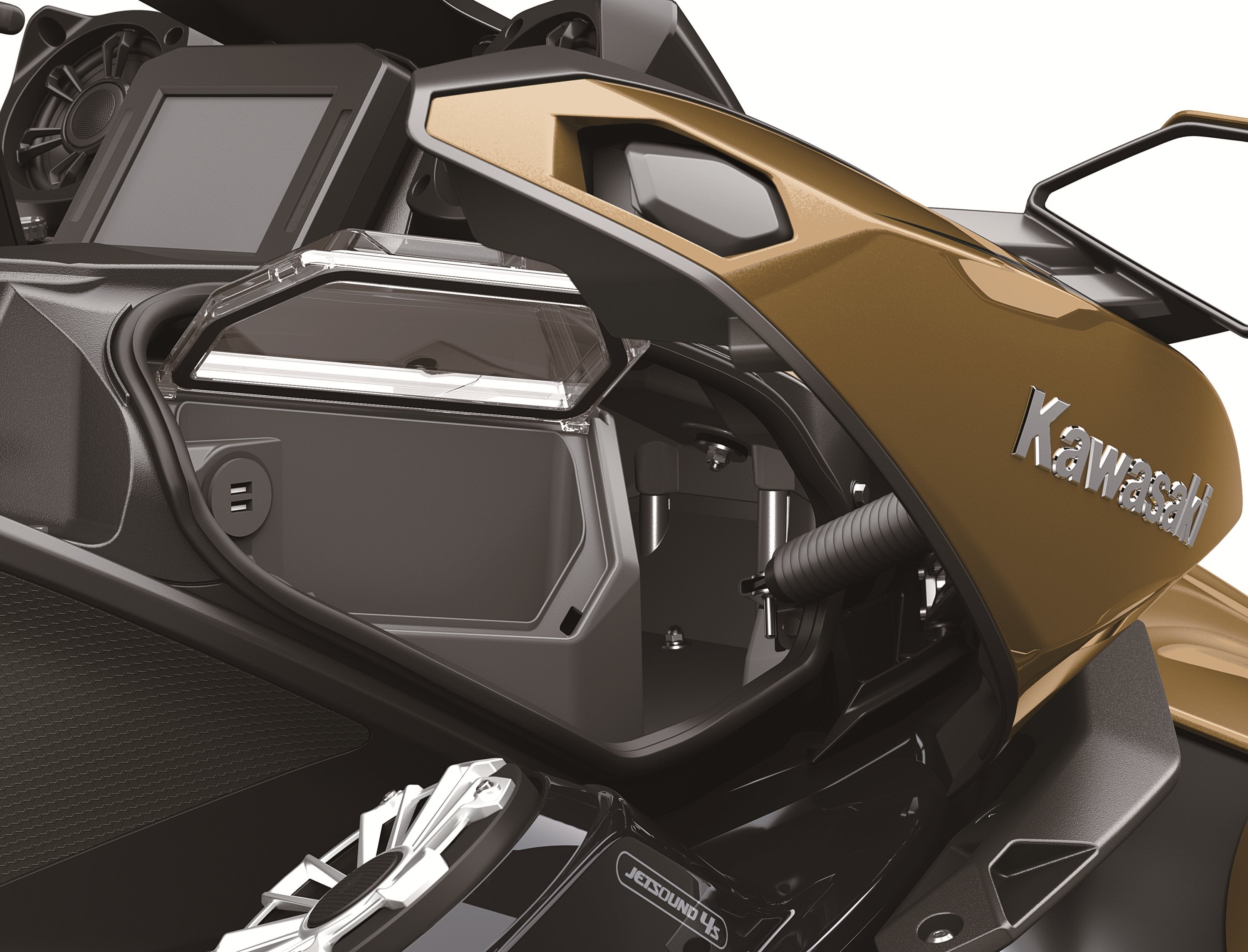
The dual storage compartments built into the right and left side of the console are cool. Doors swing outward to reveal shelf-style storage and close with the precise and secure thunk rarely found on plasticy-component PWC. In the righthand compartment is a waterproof box for your phone; a USB charger is on hand to keep everything charged up. Compartments are ideal for items you want to keep close at hand, like water, sunscreen or wallets, are easily reached from a seated position, and offer more real-estate than a traditional glovebox. Still, compartments can be a slightly awkward reach given their position forward of the handlebars. The compartment itself is also shaped like the letter U, opening at right and left sides. That lets some items slide forward where they’re difficult to reach without getting out of the saddle.
Sound System
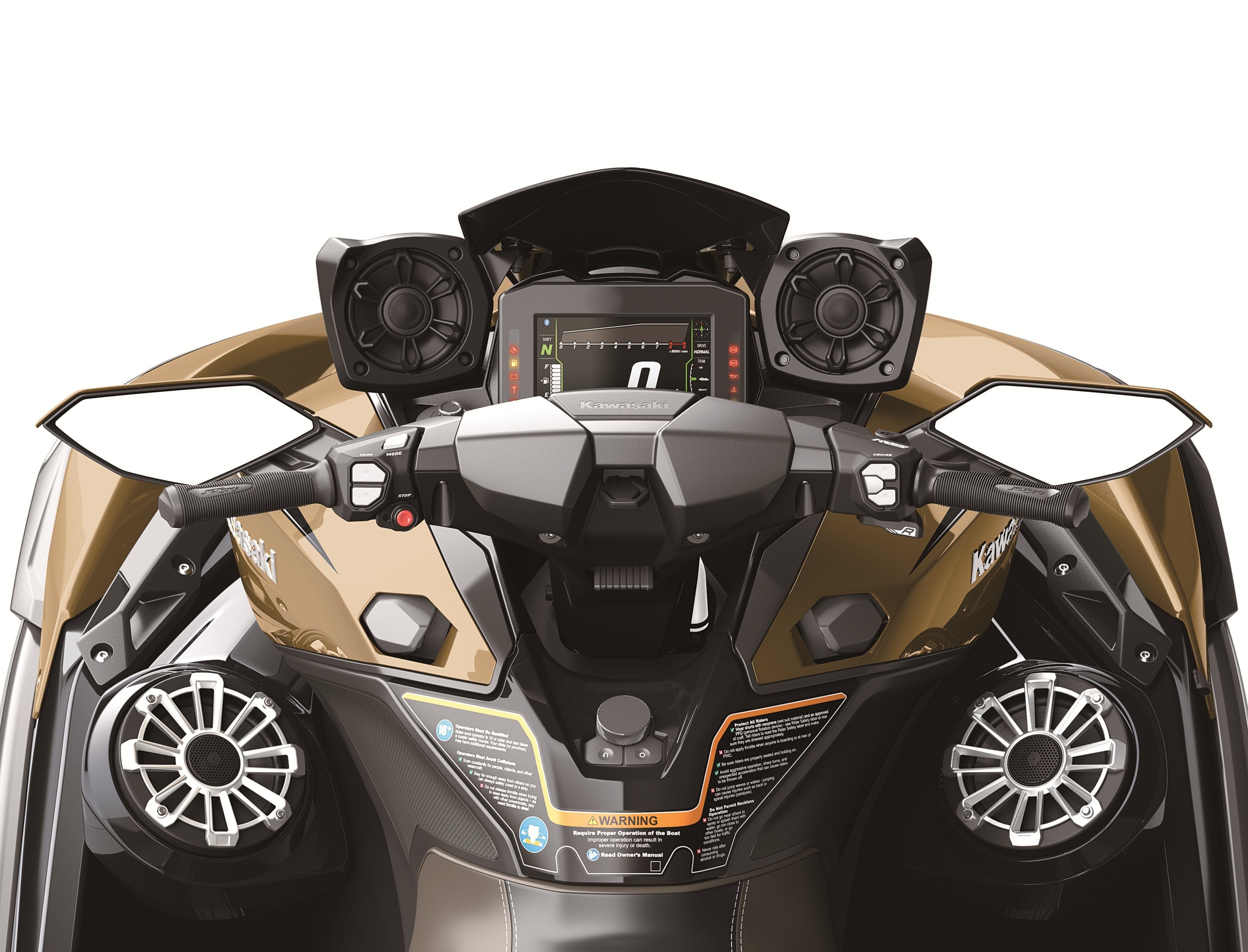
Clearly sound systems on PWC have proven popular with consumers. And Kawasaki just as clearly plans to lead the revolution. Rather than the typical two speakers located at the front of the footwells, Kawasaki pairs two 60-watt footwell speakers with another pair of smaller, 35-watt speakers to the sides of the display. The 200-watt system produces abundant, clear sound out on the water, aimed at driver and passengers. Phone or audio player is stowed in the previously mentioned waterproof compartment in the side storage and links via Bluetooth. A volume and control knob is placed atop the console just forward of the handlebars.
Kawasaki Smart Reverse and Deceleration (KSRD)
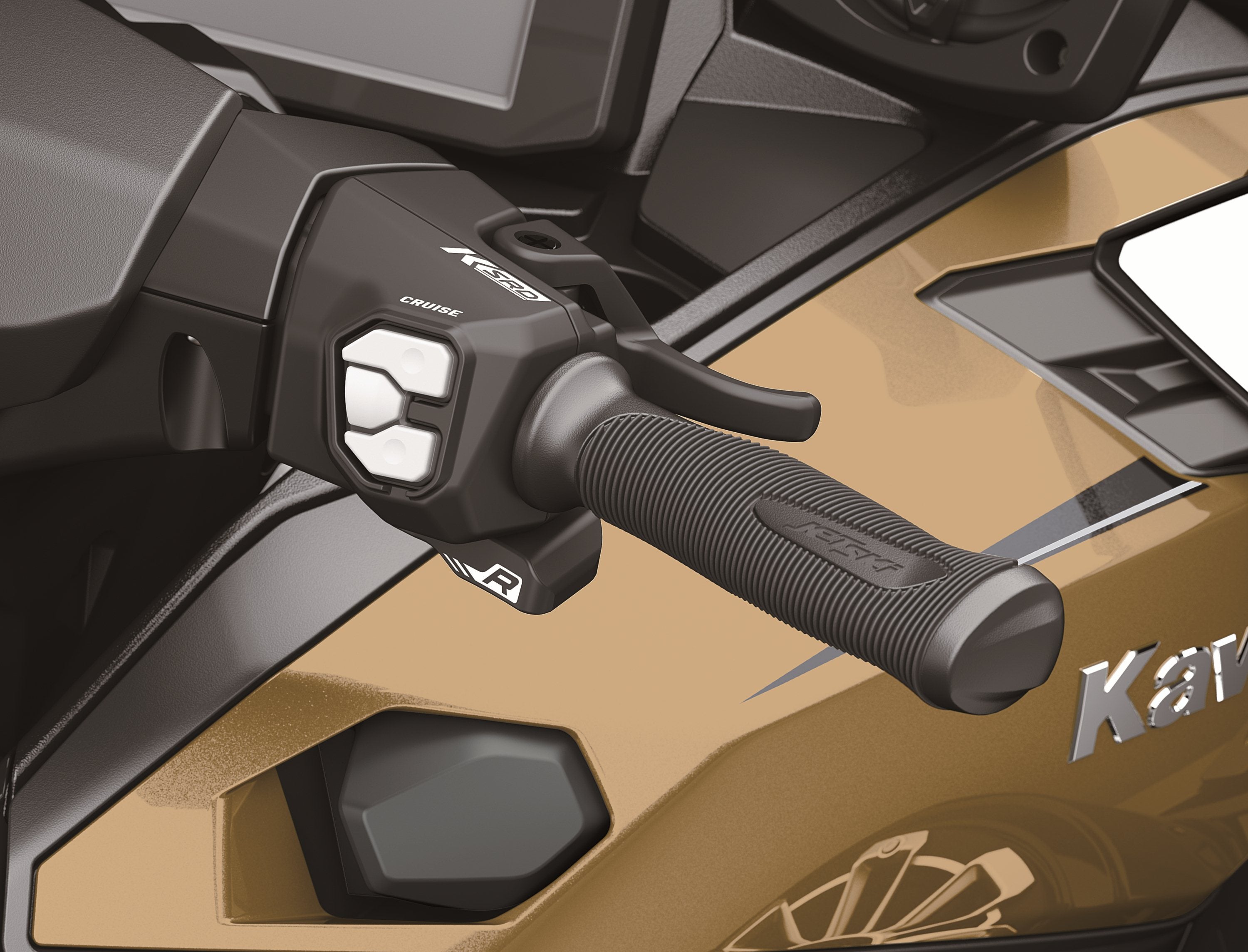
Kawasaki finally joined the electronic reverse and deceleration world with the introduction of the feature on last year’s 2022 Ultra 310LX. The long-awaited solution is similar to competitors in that it uses the reverse bucket to redirect water flow, but the control is totally different than Sea-Doo’s Intelligent Brake & Reverse or Yamaha’s RiDE system. Unlike the added lever added to the lefthand side of the handlebars used on those systems, KSRD links a small lever to the traditional righthand throttle. Tap the button with the adjacent thumb of your throttle hand and the craft goes into a neutral setting. Depress the button and continue pressure and you add throttle in reverse.
Once you get over the habit of reaching for a reverse/deceleration lever on the lefthand side of the handlebars, the system proves both easy and intuitive. One minor gripe is that there’s a tiny bit of a lag before the system responds when transitioning from reverse back into forward. But the one-hand control frees up your left hand to grab a dock line.
Those Lights…And Rearview Camera
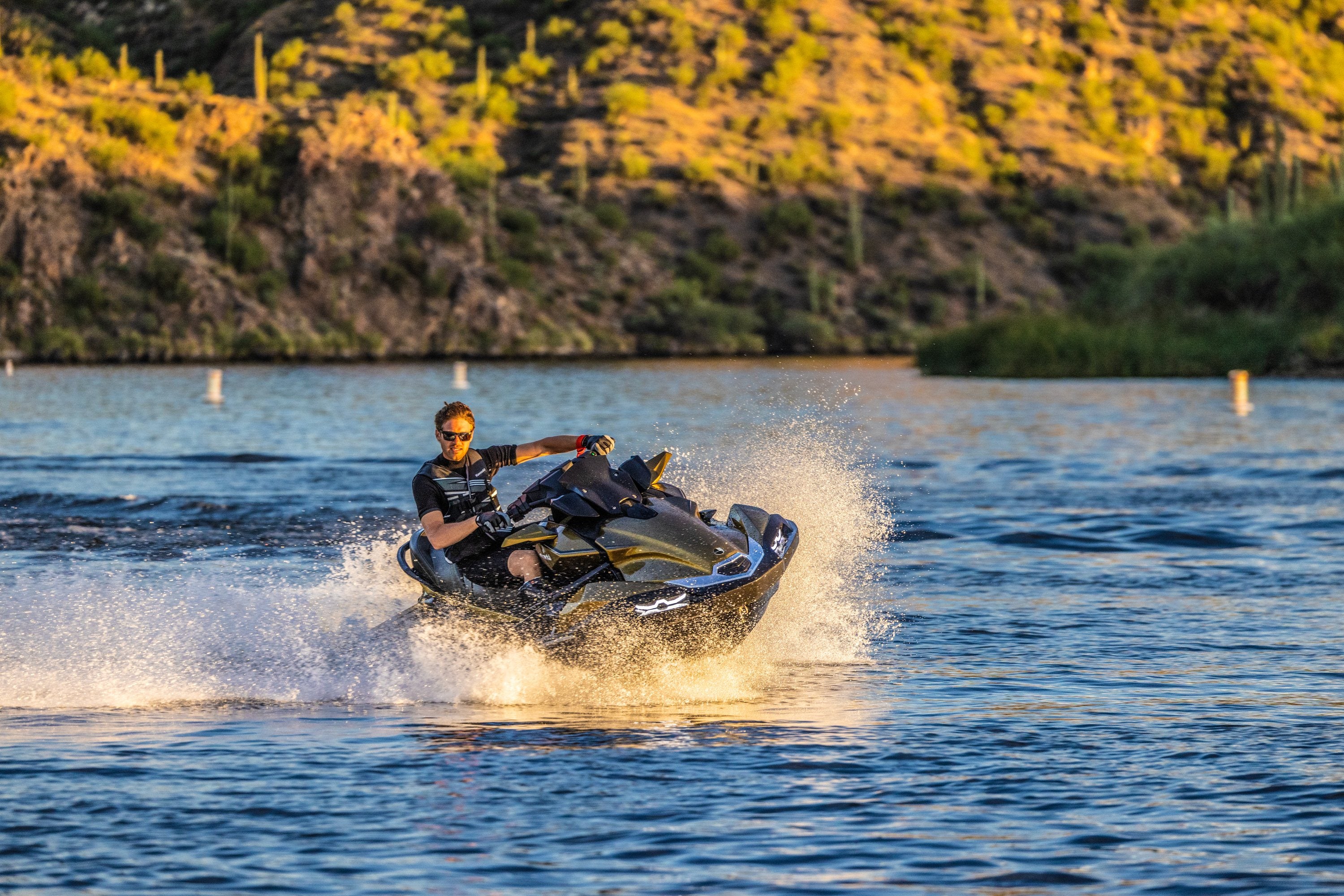
If there were two features I initially dismissed as techy gimmicks, they were the craft’s LED accent lights and rearview camera. The accent lights certainly look cool but they’re just how Kawasaki describes them – accents. They add a small amount of daytime visibility but they’re mostly there for the coolness factor.
The rearview camera, on the other hand, surprised me. Turned on via the display controls, it provides a decent wide-angle view behind the craft. This proved useful when backing up around the other craft when navigating docks at lunch and gas stops. I also found leaving it on during the second half of the ride was a great way to monitor traffic behind me or potentially overtaking my craft to port or starboard.
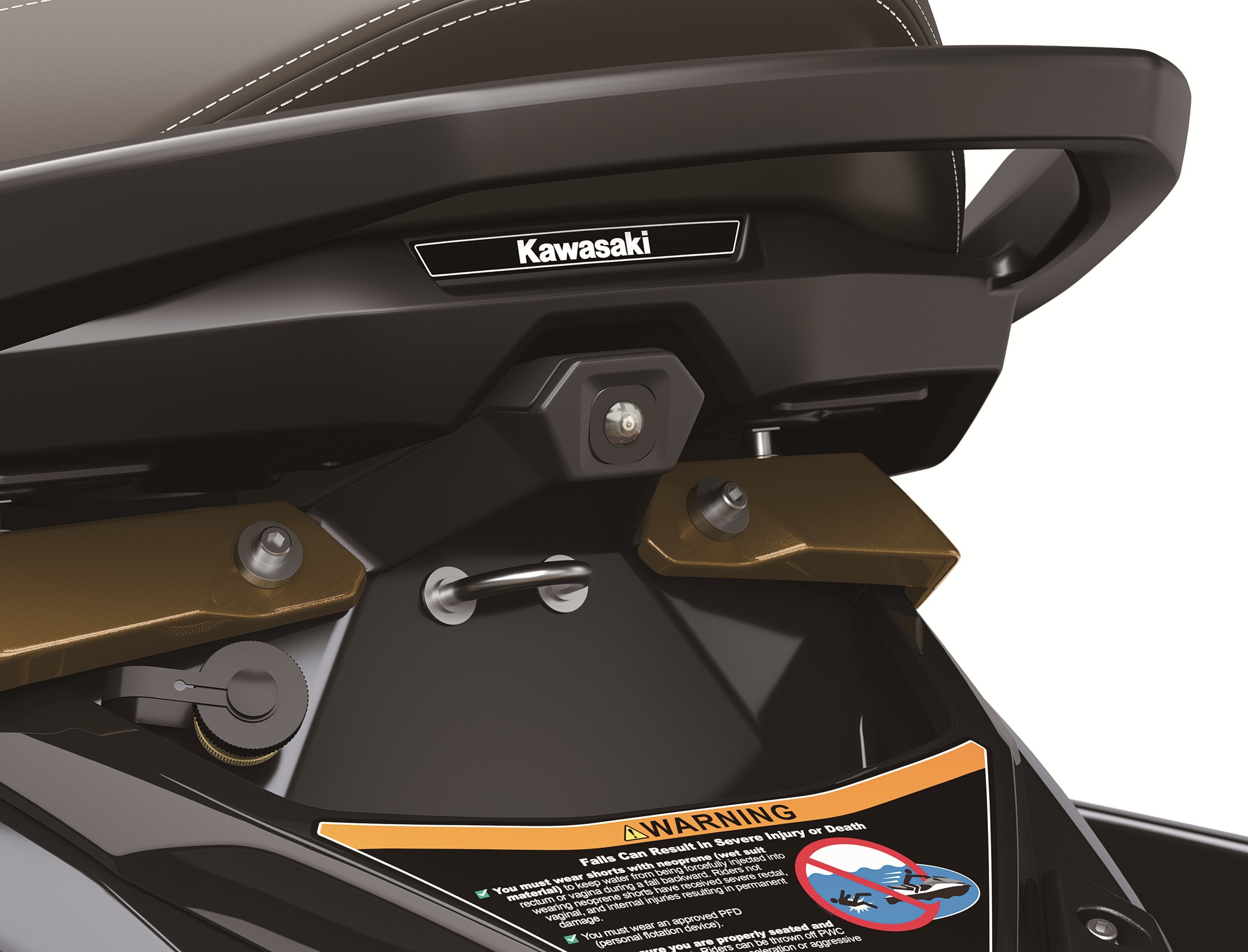
It’s still a good practice to look over your shoulder before making a turn or veering right or left, especially in group-ride or busy waterway scenarios, but I found the camera a great way to quickly check what was happening behind. Just be aware that water coming off the hull at faster speeds can begin to reduce your field of view. Taking advantage of the craft’s cargo options on the aft deck also block the camera lens. But with no cargo the view is welcome, and vital stats like speed still display when the rearview view is active.
Performance
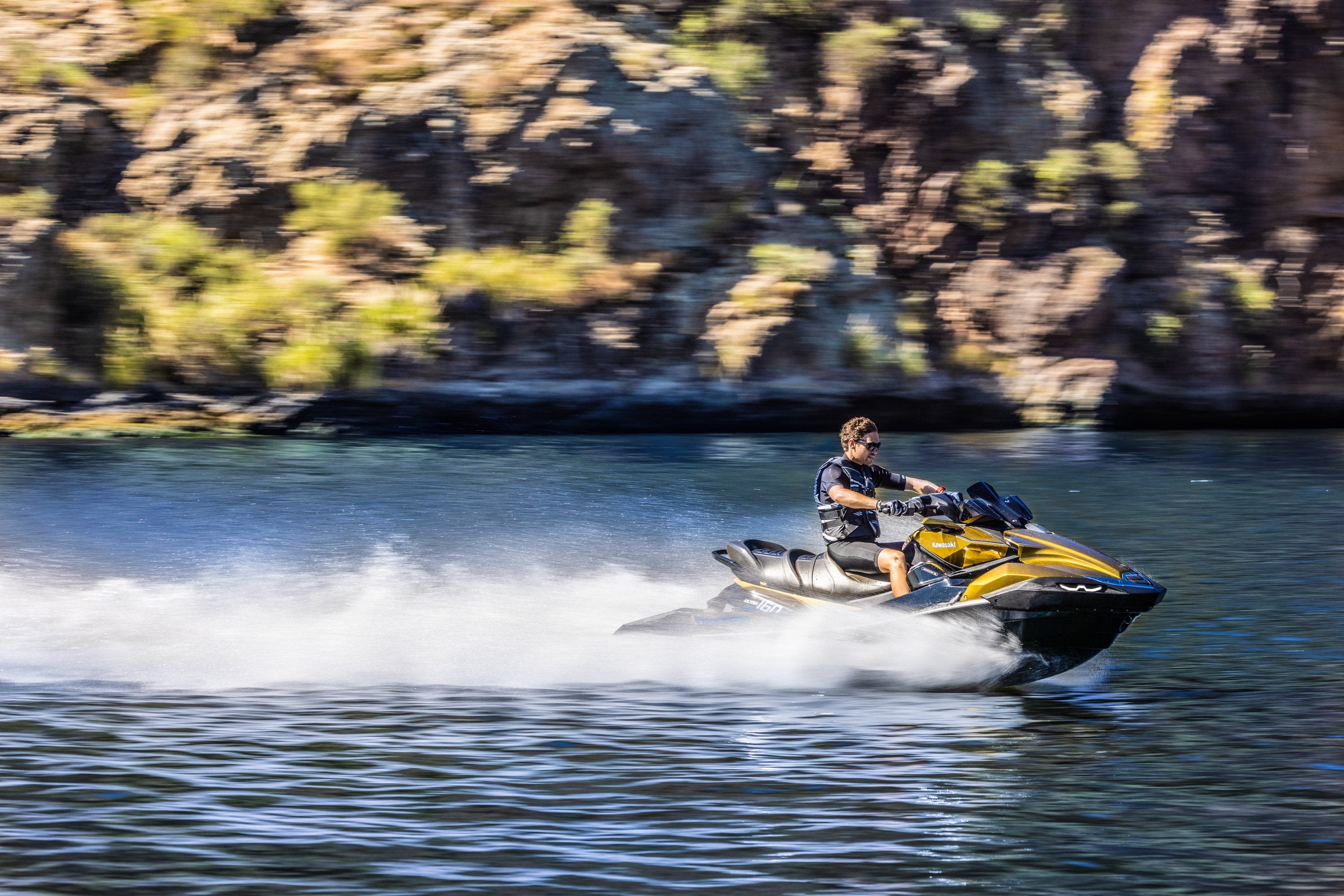
As to performance, the non-supercharged, 160hp version of Kawasaki’s 1,498cc dual overhead cam four cylinder is far more fuel-efficient than its supercharged, 310hp sibling. As a result, it has greater range for touring types. Low-end and midrange acceleration is also quite snappy, giving the craft a performance feel. That said, the 160LX’s actual top speed is a notch below its closest competition. I averaged about 52 mph running with and against the current on the Sacramento River, although it felt noticeably faster from a seat-of-the-pants perspective. But both Sea-Doo’s GTX 170 ($15,299) and Yamaha’s FX Cruiser HO ($16,699) can run closer to 57-58 mph in good conditions.
Final Word
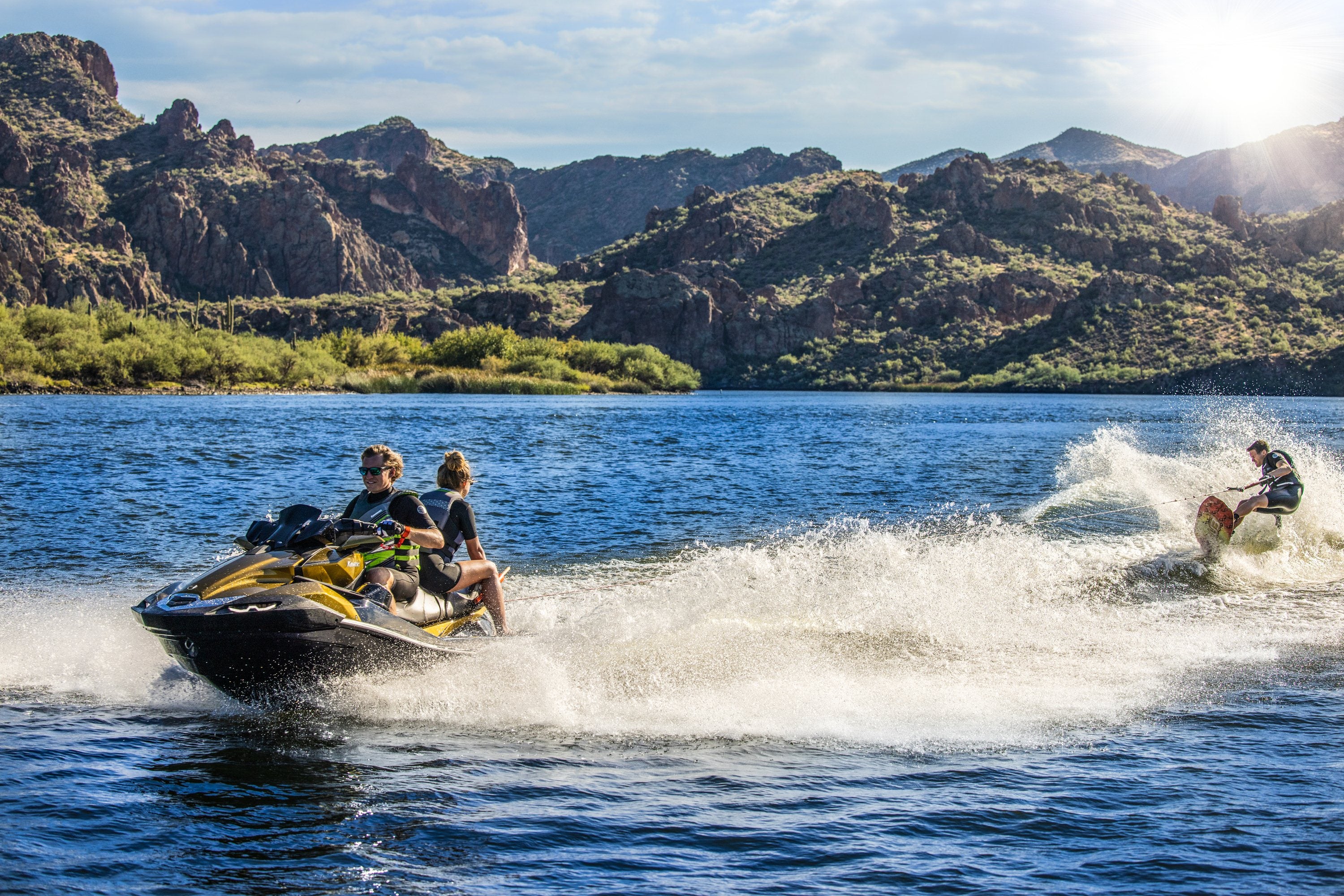
The 160hp engine definitely makes the craft more affordable – both in the showroom and at the gas pump – but the Ultra 160LX keeps that flagship feel, right down to the metallic gold-and-black paint job. The 160LX is also a better option for touring riders due to the increased range, and watersports fans will likely find the engine’s response smoother and easier to keep at ski and wakeboard speeds. Features are also now on par with competitive models. Ones yet to be mentioned include an adjustable saddle to tailor the ride to different size riders, 7” TFT color display with smartphone connectivity and multiple display modes, and the potential to add coolers, storage or gas caddies atop the large aft platform.
Final takeaway? Kawasaki is now a legit contender in this category. And often looks and feels like a craft that costs much more.
Get PersonalWatercraft.com in your Inbox!
Like PersonalWatercraft.com on Facebook
Comments
Most Popular

2025 Yamaha JetBlaster PRO 2-Up Review

Remembering the Sea-Doo XP

2024 Kawasaki Jet Ski STX 160X Review

Whatever Happened to the Wetbike?

2025 Yamaha JetBlaster Review













 Your Privacy Choices
Your Privacy Choices